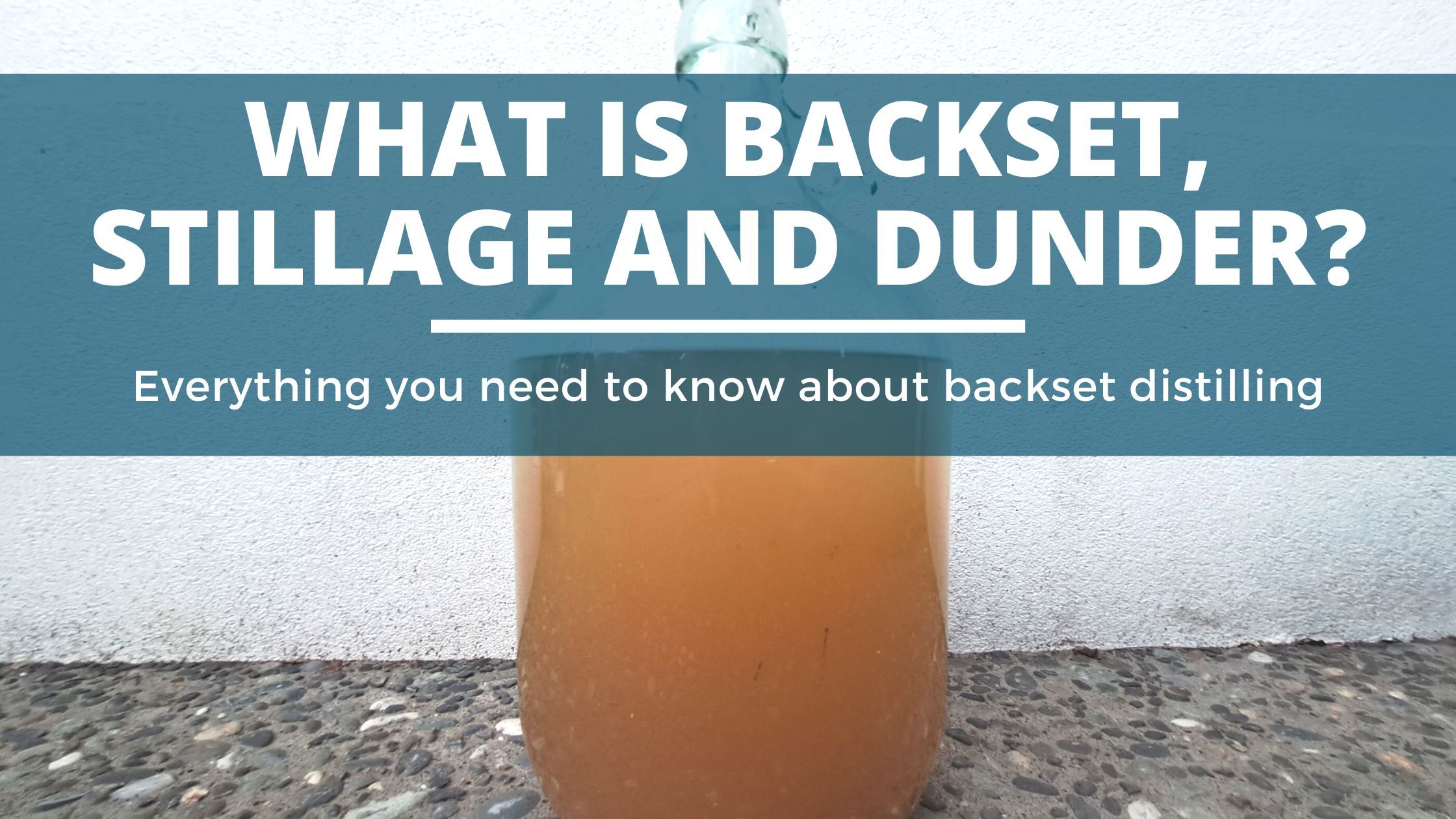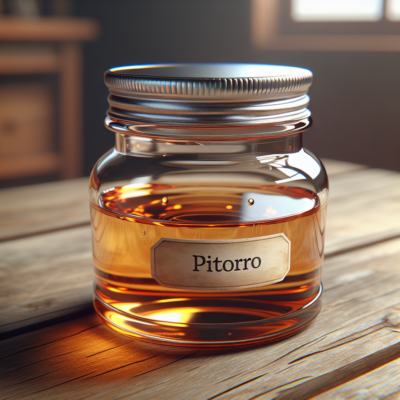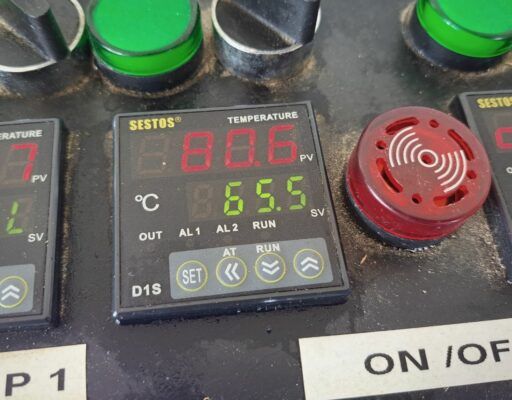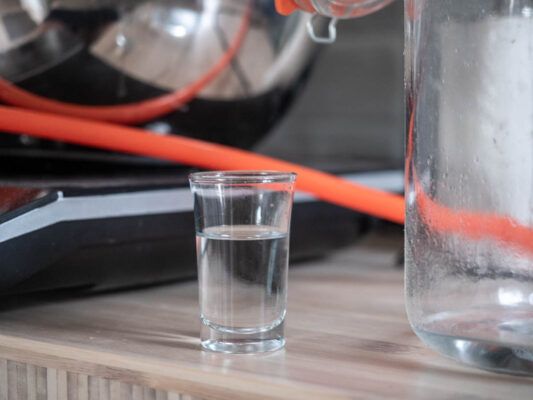Distilling, Distilling 101
What Is Backset Distilling (Explained)
Backset, as with other terms experienced home distillers throw around, can be a confusing concept for new distillers. But, it’s quite straightforward.
Backset distilling is the process of adding liquid leftover (backset) from the previous distillation to a fresh wash. The liquid is acidic, so it lowers the pH of your wash. Bacteria thrive in environments with a neutral pH, so having a lowered pH prevents any microbial instability that can potentially spoil the flavor of your wash.
Speaking of flavor, adding the backset also encourages ester oils responsible for creating fragrant compounds in your final drink.
So, if you’ve wanted to know what backset distilling is, carry on reading to find out.
Table of Contents
What Exactly Is Backset?
After distillation, not all the wash turns into alcohol, and this is referred to as backset.
Backset is the acidic liquid left in the still after the distillation of whiskey or any other grain, sugar, or molasses mash has been completed.
You’ll also come across terms like hot slops, dunder, spent beer, and slop. Essentially, these all mean the same thing.
Reusing backset serves two main purposes: enhances the flavor of your spirit and balances the wash’s pH. Here’s a deeper explanation of these instances.
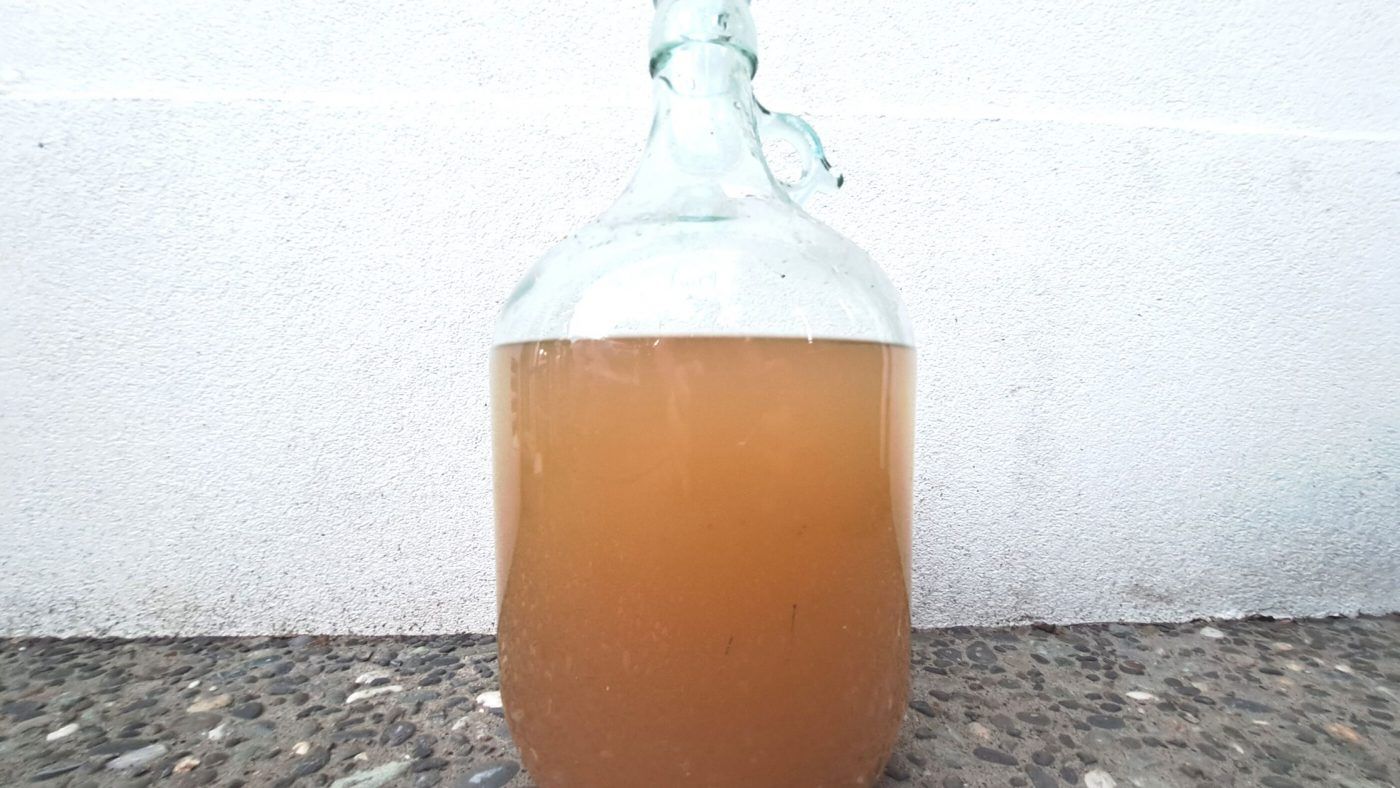
1. Using Backset For Flavor?
Backset creates esters – aromatic compounds, therefore resulting in a fruity final drink. It increases the flavor profile of fermentation. These flavors get carried over during distillation, resulting in a delicious final product.
2. Using Backset To Lower The pH
Backset is acidic, and this acidity is ideal for lowering the pH of a fresh wash. A low pH wards off any bacterial growth, therefore, creating consistently balanced successive batches.
Bacterial build-up causes unwanted flavors which can reduce the alcohol content of your product.
Dunder vs. Backset vs. Stillage
Although the terms backset, stillage, and dunder are used interchangeably, there are some nuances between these. Below’s a table explaining the differences between the three.
| Dunder | Backset | Stillage |
|---|---|---|
| • The liquid left from processed sugar cane or sugar cane products like molasses. • Added to a fresh wash to lower its pH and enrich the flavor of the rum. • Traditionally, it’s poured into dunder pits to support organic bacterial growth. • This enhances the rum oils, which in turn produces rich-flavored rum. | • The leftover liquid left over from a grain or sugar wash. • Referred to as sour mash. • Added to a fresh wash to lower its pH and enrich the flavor of the rum. • Used in the production of American whiskey. | • The solids and liquids that remain in the boiler after distillation is complete. • Contains fusel oils, small traces of ethanol, and water. • Often discarded, fed to livestock, or used as a fertilizer because it has a high organic content. |
How to collect backset:
Backset is collected when distillation is complete, typically at the end of a spirit run. But, you can also collect after the second run. Follow these steps to collect backset.
- Add your wash to the boiler.
- Run your first distillation and collect the distillate.
- Do a second run. The leftovers from this run will be your first batch of backset.
- When you’re done distilling, collect 25% of the backset.
- Allow the backset to cool completely before you add it to your fresh wash.
- Once cooled, add it to the wash and pitch your yeast.
When should you use backset when distilling
When making a fresh wash and you want to replicate the flavor of commercial spirits, then it’s best to use backset. Also, when you live in hotter climates and want to avoid using commercial pH regulators, then you can employ backset. Here’s an explanation of these cases below.
1. Backset in Rum
When making a molasses-based spirit and wanting to achieve a genuine rum taste, then you should use dunder. You can also use it to control the pH level of your spirit.
2. Backset in Whiskey
Also known as sour mash, you’d use sour mash when making a sugar-based or American – bourbon, rye, whiskey. Similar to rum making, you can use it to lower the pH and enhance the flavor of the wash.
3. Backset in other spirits
When making tequila from agave syrup, then you will add a backset to the fresh wash; both for flavor purposes and to lower the wash’s pH.
Frequently Asked Questions
Q. How much backset should I use?
For your first fermentation, it’s best to add 20-30% backset. So, if you’ve distilled a 10-gallon wash (38 liters), you’ll use 1¼ gallon (4 liters) of the backset. After a few generations (typically 5), the backset does begin to lose its potency. To minimize its ineffectiveness, it’s best to use less backset so it doesn’t slow down your fermentation.
Q. What is backset in whiskey?
Sour mash (whiskey backset) is often used in the making of American whiskey -bourbon, rye, or wheat whiskey. It’s added to enrich the flavor of the final product.
Q. What is a rum backset?
Rum backset, also known as dunder, is the liquid leftover from distilling rum. It’s used to lower the pH of your fresh wash to prevent bacterial growth and enhance the flavor of your rum.
Conclusion
There is a lot to be said about flavoring and controlling the pH of a wash. Other distillers add chemicals that act as a buffer for their wash or to enhance the taste of their drink. But if you’re looking for organic ways to enhance your spirit while keeping bacteria at bay, using backset is the way to go.
These leftovers not only enrich the flavor of your final spirit but also create a pH environment conducive enough to keep bacteria off your labor of love. Backset distilling does take a lot of practice, but once you’ve mastered a couple of distillations, you’ll confidently create consistent batches you’re fond of.

